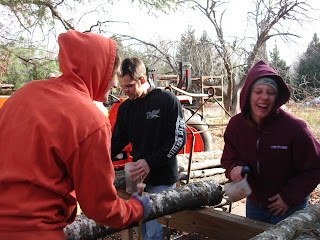Have Yourself a Very Merry Cracker…with Mushroom Butter
Written by Mary Ellen
 |
| Delicious Shiitake Butter spread over water crackers. |
One thing nice for the overwhelmed holidaymaker this time of year is that the average Christmas party is not a potluck. (although come to think of it, the FFP Christmas party was a potluck) But what cook among us can resist responding to the invitation with “Can I bring anything?” It’s not much of a guess that if your hosts know you are a mushroom grower, the answer will be “sure…. bring something mushroomey!” For those of us who grow our own Shiitake mushrooms, there is an easy fix to this extra task that will make us look as amazing as we deserve.
Enter the Mushroom Butter. Here is the perfect food for such occasions. It’s elegant, versatile and truly, above everything else, it is delicious. A dish of Shiitake Butter surrounded by expectant crackers makes a nice presentation and superior switch from the boring cheese and cracker. A 3-6 oz container slathered on a square of bread dough with an ample over-layer of grated Asiago cheese, rolled and baked, makes an elegant appetizer or dinner bread. Even a few tablespoons stirred into a lowly bowl of cooked frozen broccoli will transform the vegetable.
 |
| This dough has just been slathered with Shiitake Butter and Asiago cheese. |
 |
| No one at F&FP complained while eating this mouthwatering homemade treat! |
But first, to clarify; this mushroom butter is actually a compound butter, not mushrooms cooked down into a brown puddle of spreadable vegetable matter such as you might do with apples. This is a blend of cooked and seasoned, pureed mushrooms, blended with equal amounts of butter, but before you think of it as overly rich, remember that this is butter at half the calories and twice the taste, so it’s relatively healthy!
Here is the basic recipe for Shiitake Butter:
Ingredients:
Shiitake, stems removed, to weigh 1 lb.
2 Tbsp butter
1 small onion
1 tsp salt
1 tsp sugar
1 Tbsp soy sauce
About one and a half pounds of salted butter, softened
Method:
Tear up a pound of stemmed shiitake. You’ll be cooking these down and pureeing, so large pieces are okay.
With medium heat, melt 2 Tbsp butter in a medium skillet and add 1 small chopped onion, sauté until soft. Add mushroom pieces, stir around a bit and cover the pan. Every few minutes, check the pan and stir things around, keep the heat warm enough to cook the mushrooms but try to avoid browning the onions. Once the
mushrooms start to cook down and you see a liquid at the bottom of the pan (about 5-10 minutes) add the salt and sugar. Reduce the heat and keep stirring things around every few minutes until the cloudy liquid at the bottom of the pan starts to become clear. Remove the lid and add soy sauce and cook a few minutes more, then off the heat.
COOL the mixture (duxelles) until it reaches room temp. Stir things around in the pan as it sits to aid in even cooling. Once the mushrooms are only slightly warm to the touch, puree in a food processor until the mixture is a paste.
HERE is the secret to making an excellent shiitake butter: make sure everything, especially the ingredients and mixing bowl, is at room temperature for this final blending of mushroom puree and butter!
What is room temperature butter you may ask? If the Sami people of the far north have hundreds of words for snow, the pastry chef ought have the same amount of words for butter, but the best description might be “medium soft.” Ready a mixer with a whip attachment if you have it; otherwise regular beaters will do.
Measure out your puree and ready an equal amount of medium soft butter. The puree volume can vary depending on the raw mushrooms moisture content, but it should be around 3 cups.
Whip or beat the butter till fluffy, then stir in the puree, finally whipping it, until the butter and mushrooms are well blended. This is the secret to making a consistent, well blended butter. If components are too warm , you’ll end up with soup; too cool, you’ll end up with chunky butter.
This makes about 3 lb. Shiitake Butter. Transfer to individual deli containers or jars for gifting, or wrap in freezer paper. This recipe can be doubled with a standard 4 ½ qt mixing bowl.
Before you think that I’m overlooking the fact that many of you don’t grow mushrooms in the deep of winter, know that it can be made out of the frozen mushroom duxelles you have squirreled away in your freezer from your abundant fall harvests. Bring the duxelles to room temperature before pureeing. Butter made from these duxelles can be refrozen, though for optimal flavor should be used within a few months. Mushroom butter made from fresh mushrooms, however, double wrapped, can be frozen up to 8 months, so its nice to put up a supply when mushrooms are in full season.
This year my sister asked for a “log of mushroom butter” for Christmas, which could be a clever double entendre as many of us grow Shiitake mushrooms on wood logs. But of course she means a sausage shaped roll of Shiitake Butter wrapped in parchment that she can put in the freezer and whack off a chunk whenever she needs some. What a great Christmas present idea!
Have an amazing, Merry Christmas!
















